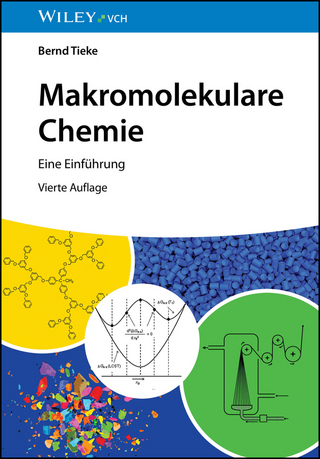
Basic Principles of Drug Discovery and Development
Academic Press Inc (Verlag)
978-0-12-411508-8 (ISBN)
- Titel erscheint in neuer Auflage
- Artikel merken
The text introduces the fundamental principles of drug discovery and development, also discussing important drug targets by class, in vitro screening methods, medicinal chemistry strategies in drug design, principles in pharmacokinetics and pharmacodynamics, animal models of disease states, clinical trial basics, and selected business aspects of the drug discovery process. It is designed to enable new scientists to rapidly understand the key fundamentals of drug discovery, including pharmacokinetics, toxicology, and intellectual property."
As an industrial medicinal chemist, Dr. Blass has experience with major pharmaceutical organizations (Wyeth, Procter & Gamble Pharmaceuticals) and small biotech operations (Fox Chase Chemical Diversity Center), which provided him with a wealth of expertise in the art of drug discovery and development (including a wide range of disease states and biological targets). His position with Temple University’s School of Pharmacy and the Moulder Center for Drug Discovery has provided him with essential experience as an educator and academic scientist. These experiences, as well as his training and expertise as a registered US patent agent, have provided him with the tools and skills necessary to bridge the gap between industrial drug discovery and academic research.
Foreword1. Drug Discovery and Development: An Overview of Modern Methods and PrinciplesDrug Discovery and Development from 20,000 FeetTarget Selection: The First Step ForwardHit Identification: Finding a Starting PointIdentify a Clinical Candidate: Juggling the PropertiesQuestionsReferences2. The Drug Discovery Process: From Ancient Times to the Present DayThe Age of Botanicals: Preindustrial Drug DiscoveryPaul Ehrlich: The Father of Modern Drug DiscoveryMilestones in Drug Discovery Milestones in Animal Models: Breeding a Better Model Milestones in Molecular Science X-ray Crystallography Molecular Modeling and Computational Chemistry High Throughput Technology: Chemical Synthesis and Screening Science Milestones in Biotechnology Recombinant DNA and Transfection Technology Polymerase Chain Reaction (PCR) Technology Monoclonal Antibody and Hybridoma TechnologyThe Rise of Biologics and Macromolecular TherapeuticsSocietal and Governmental Impacts The Pure Food and Drug Act of 1906 The Elixir of Sulfanilamide Disaster of 1937 The Thalidomide StoryRegulatory Milestones Durham–Humphrey Amendment of 1951 Kefauver–Harris Amendment of 1962 Hatch–Waxman Act of 1984 Biologics Price Competition and Innovation Act of 2009Future Developments in Drug DiscoveryQuestionsReferences3. Classical Targets in Drug DiscoveryProtein StructureEnzymesInhibition of EnzymesG-Protein-Coupled Receptors (GPCRs) G-Protein-Dependent Signaling pathways cAMP Signaling IP3 Signaling Modulating GPCR ActivityIon Channels Gating Mechanisms Ligand-Gated Channels Voltage-Gated Channels Other Gating MechanismsMembrane Transport Proteins (Transporters)Emerging TargetsQuestionsReferences4. In Vitro Screening SystemsThe Language of Screening: Basic Terms Concentration Response Curves and IC50s Dissociation Constants (Kd) and Inhibition Constants (Ki) Efficacy versus Binding: EC50s Agonist, Partial Agonist, Antagonist, Allosteric Modulators, and Inverse Agonists Agonists and Partial Agonists Antagonists Basal Activity and Inverse Agonists Allosteric Modulation Receptor ReserveStreptavidin and BiotinBiochemical versus Cellular AssaysAssay Systems and Methods of DetectionRadioligand Systems Scintillation Proximity Assay (SPA)Enzyme-Linked Immunosorbent Assay (ELISA)Fluorescence-Based Assay Systems Fluorescence Polarization (FP) Fluorescence Resonance Energy Transfer (FRET) Time-Resolved Fluorescence Resonance Energy Transfer (TRFRET) Amplified Luminescent Proximity Homogeneous Assay (AlphaScreen™) Fluorescent Detection of Calcium FluxReporter Gene Assays Chloramphenicol Acetyltransferase (CAT) ß-Lactamase Reporter Assays Luciferase Reporter AssaysKinetic Fluorescent Measurement SystemsLabel-Free Assay Systems Cellular Dielectric Spectroscopy Optical Biosensors Surface Plasmon Resonance TechnologyElectrophysiological Patch ClampGeneral Consideration for All Screening MethodsQuestionsReferences5. Medicinal ChemistryStructure–Activity Relationships and Structure–Property RelationshipsThe Role of ChiralityPush and Pull in Structure–Activity RelationshipsQuantitative Structure–Activity RelationshipsThe PharmacophoreDeveloping an SAR Data SetThe Structure–Activity Relationship CycleBioisosterismStructure–Activity Relationship, Selectivity and Physicochemical Properties“Druglike GuidelinesQuestionsReferences6. In vitro ADME and In vivo PharmacokineticsAbsorption Solubility PermeabilityDistribution Permeability Transporters Plasma Protein BindingElimination Pathways Metabolism ExcretionIn vitro ADME Screening MethodsIn Vivo Pharmacokinetics Volume of Distribution Clearance Half-life BioavailabilitySpecies selectionQuestionsReferences7. Animal Models of Disease StatesSources of Animal ModelsValidity of Animal ModelsSpecies SelectionNumber of AnimalsExemplary Animal Models by Disease Category Animal Models in Neuroscience Animal Models of Neurodegeneration Animal Models of Cardiovascular Disease Models of Hypertension Models of Hyperlipidemia and High Cholesterol Models of Atrial Fibrillation Models of Heart FailureAnimal Models of Infectious Disease Murine Thigh Infection Model Murine Model of Systemic Infection The Mouse Model of Influenza Virus Infection Limitations of Animal Models of InfectionAnimal Models of Oncology Mouse Xenograft Tumor Model Mouse Allograft Tumor Model Genetically Engineered Mouse Models of CancerQuestionsReferences8. Safety and ToxicologySources of ToxicityAcute versus Chronic ToxicityCytotoxicityCarcinogenicity, Genotoxicity, and MutagenicityDrug–Drug InteractionsCardiovascular Safety and Toxicology StudiesCentral Nervous System Safety and Toxicology StudiesImmune System Mediated Safety IssuesTeratogenicityIn Vivo Toxicity and Safety StudiesQuestionsReferences9. Basics of Clinical TrialsBefore the ClinicDrug SupplyDelivery MethodsFormulationInvestigational New Drug ApplicationPhase I Clinical TrialsPhase II Clinical TrialsPhase III Clinical TrialsPhase IV Clinical TrialsAdaptive Clinical Trial DesignQuestionsReferences10. Translational Medicine and BiomarkersDefinition of a Biomarker and Their ClassificationCharacteristics and Impact of BiomarkersBiomarkers versus Surrogate End PointsImaging TechnologiesThe Practical Application of Biomarkers DPP-IV Inhibitors (Januvia®) Physiological Measurements as Biomarkers: Orexin Antagonists FDG PET Imaging Agent The Neurokinin 1 (NK1) Receptor, Depression, and PET Imaging: The Aprepitant StoryQuestionsReferences11. Organizational Considerations and Trends in the Pharmaceutical IndustryOrganizational Structures of Pharmaceutical CompaniesBusiness Divisions InteractionsThe Discovery Project Team Evolutionary CycleThe Business ClimateMergers and AcquisitionsContract Research OrganizationsAcademic Drug DiscoveryFunding IssuesQuestionsReferences12. Intellectual Property and Patents in Drug DiscoveryPatentable Subject MatterInherent Properties and PatentabilityNovelty and the Prior ArtObviousness and the Prior ArtInventorshipAssignment and OwnershipClassification of Patents and Patent ApplicationsImpact of Overlapping PatentsPatent Applications and their ContentsContents of a Patent ApplicationQuestionsReferences13. Case Studies in Drug DiscoveryTamiflu: From Mechanism of Action to Marketed DrugHistone Deacylase Inhibitors: Physicochemical Optimization via Structural ChangeHIV Protease Inhibitors: Chemically Complex Miracle DrugsNitrofurantoin: A Surprisingly Successful DrugSeldane® (Terfenadine) versus Allegra® (Fexofenadine): Metabolism Matters: SafetyClaritin® (Loratadine) versus Clarinex® (Desloratadine): Metabolism Matters: PharmacokineticsMPTP: Parkinson’s Disease in a BottleBupropion and Methylphenidate: Improving Performance via Formulation ChangesSelective Inhibition of Cyclooxygenase-2: The Impact of an Inadequate Written DescriptionQuestionsReferencesAnswers to Questions in Textbook by ChapterSubject IndexDrug Index
| Verlagsort | San Diego |
|---|---|
| Sprache | englisch |
| Maße | 152 x 229 mm |
| Gewicht | 930 g |
| Themenwelt | Naturwissenschaften ► Chemie ► Organische Chemie |
| Technik | |
| ISBN-10 | 0-12-411508-X / 012411508X |
| ISBN-13 | 978-0-12-411508-8 / 9780124115088 |
| Zustand | Neuware |
| Haben Sie eine Frage zum Produkt? |
aus dem Bereich



